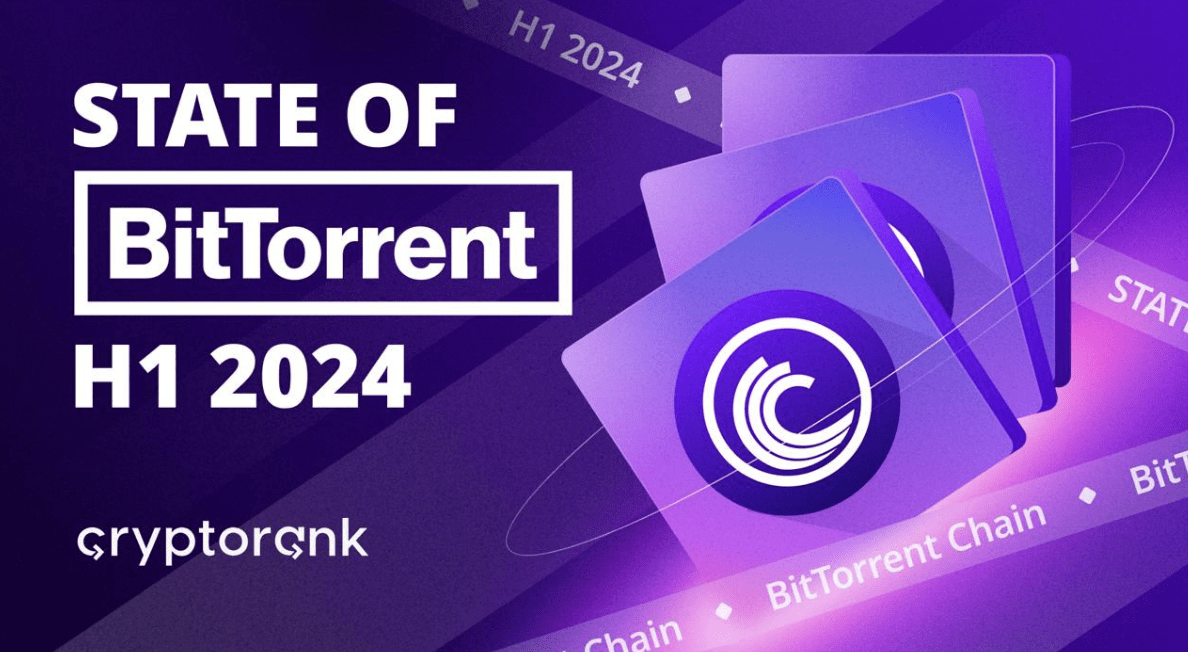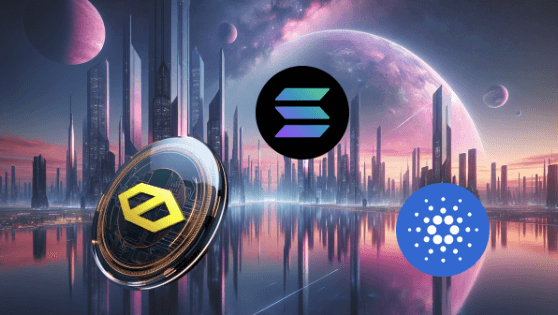Key Takeaways
-
BitTorrent Chain is the core infrastructure for incentivizing multiple BitTorrent products, such as the original BitTorrent torrent tracker, BTFS file storage system, and DLive streaming platform.
-
BTTC is a cross-chain multi-layer protocol that enables seamless asset interoperability between Ethereum, TRON, and BNB Chain, rather than a classic chain.
-
The $BTT token is used not only for gas fees but also for faster file distribution in BitTorrent, rewarding validators, paying for BTFS storage, purchasing BitTorrent X services, serving as collateral on JustLend DAO, acting as a perpetual asset on SUN, and functioning as legal tender in Dominica.
-
Designed to leverage BitTorrent's user base, BTTC and $BTT may face challenge as fewer users engage in file-sharing since BitTorrent loses a market share of internet traffic.
-
Despite losing significant market share in relative terms, BitTorrent remains relevant and widely used in absolute terms. The team may respond to market challenges by playing on the DePIN trend and by integrating Bitcoin into BTTC.
What is BitTorrent?
The answer to this question is more complex and entertaining than meets the eye. BitTorrent includes the original BitTorrent client, BitTorrent Chain, $BTT token, BTFS file storage system, BitTorrent Speed torrent client, and DLive streaming platform.
Torrent Tracker
Originally, BitTorrent was a distributed data transfer protocol launched in 2001, enabling simultaneous file downloads from multiple sources to increase speed. This system connects file-sharing participants, known as peers (recipients) and seeders (transmitters). Once peers download part of a file, they become seeders and start sharing.
Despite its popularity and millions of users, BitTorrent faced financial challenges because it was distributed for free and often used for sharing unauthorized content. However, the platform continuously explored innovative monetization strategies, such as the 2007 entertainment store and the 2013 initiative to compete with iTunes and Amazon. Even though these efforts didn't achieve high profitability, BitTorrent's technical updates and introduction of paid tiers demonstrated its commitment to evolving and providing value to its users. The emergence of free alternatives using the same open-sourced technology highlights the significant impact and influence BitTorrent has had in the digital world.
BitTorrent Chain
The lack of an effective business model ultimately led to Justin Sun acquiring the BitTorrent protocol and its brand for $140 million in 2018. Tokenization has become the solution to the monetization problem. In February 2019, BitTorrent introduced BTT as the native TRON-based token with TRC-10 standard. This was followed by the launch of its own blockchain, BitTorrent Chain (BTTC), in December 2021.
Unlike traditional blockchains, BTTC is not a standalone chain but rather a cross-chain multi-layer protocol that enables seamless asset interoperability between different blockchains like Ethereum, TRON, and BNB Chain. The precise definition of BTTC would be a TRON-built heterogeneous cross-chain interoperability protocol that employs a PoS consensus mechanism and enables EVM smart contract compatibility.
The architecture of BTTC includes a three-layer system:
-
Root Contracts (Staking Layer). This layer manages smart contracts on chains like TRON, Ethereum and BNB Chain. These contracts use token mapping to link tokens from these chains to BTTC through deposits and allow BTTC to support over 100 different tokens via the BTTC Bridge.
-
Delivery (Validator Layer). This layer is responsible for block validation, selecting block producers, and creating checkpoints. Validators stake $BTT on the TRON chain and aggregate blocks from the block-producing layer into a Merkle tree.
-
BTTC (Block Producer Layer). This layer aggregates transactions into blocks. Block producers are periodically shuffled, and blocks produced are validated by the Delivery nodes. Checkpoints consisting of Merkle tree hashes of block sets are committed to TRON, BSC, and Ethereum.
BitTorrent File System (BTFS)
BTFS is a decentralized file storage system where users can rent space in the network to store their data, as well as offer their own device's storage space and earn tokens in return. You can interact with the BTFS system via BTFS Finder, a file search engine. Note, that BTFS halved storage miner rewards from 15 billion BTT to 7.5 billion BTT starting June 25, 2024.
BitTorrent Speed
BitTorrent Speed is an upgraded torrent client that rewards seeders with $BTT tokens. The client works by automatically bidding $BTT tokens to seeders for faster download speeds. The longer you seed, the more $BTT tokens you may earn, providing a financial incentive to share files. Currently, only the Web version is available, it integrates a torrent search engine and RainberryTV, a free-to-use streaming platform with 20 live channels and over 100 content partners.
DLive Protocol
DLive is a protocol for streaming content where viewers can earn $BTT tokens for watching. Streamers can purchase exposure for a small fee and receive donations from their audience, creating a mutually beneficial ecosystem. BitTorrent acquired DLive in 2019. The platform's lenient approach to content moderation has attracted various groups of free speech seekers, alt-right activists, and gamers, making it a popular alternative to more strict YouTube and Twitch.
BTT Token
The $BTT token was launched in February 2019 as a TRC-10 token on the TRON blockchain, with a total supply of 990 trillion tokens.
Of this supply, 17% was allocated to investors, 43% to developers and project partners (BitTorrent Team, BitTorrent Foundation, and TRON Foundation), 19.9% for ecosystem development, and 20.1% was distributed to users via airdrop. BitTorrent users received 10%, while TRX holders were allocated 10.1%, with these tokens vesting over six years.
With the introduction of the cross-chain compatibility protocol BTTC, the $BTT token was upgraded to the TRC-20 standard on the TRON network. Token contracts were also deployed on Ethereum and BNB Chain using ERC-20 and BRC-20 standards. The token underwent a redenomination, where old $BTT tokens were exchanged for new ones at a 1:1000 ratio, increasing the total supply from 990 billion to 990 trillion while preserving its market value.
According to public data, most of the token supply was already released to the market, with additional tokens being distributed until 2025, and partnership tokens unlocking continuing through 2028.
Initially, the $BTT token was only used to pay for faster file distribution in the BitTorrent Speed application. However, with BTTC launch, $BTT became fundamental for network operations and gas fee payments. The utility of $BTT has since expanded, and it is currently used for:
-
Paying gas fees
-
Rewarding validators
-
Paying for file storage on the BTFS network
-
Purchasing various services in BitTorrent X products
-
Serving as collateral on JustLend DAO
-
Acting as a perpetual asset on the SUN platform
-
Functioning as legal tender in Dominica
Market Performance and Network Usage in H1 2024
In the first half of 2024, the performance of $BTT has largely mirrored the movements of $BTC, reflecting broader market trends. During periods of Bitcoin's growth, the $BTT token also experienced upward momentum. However, as Bitcoin's uptrend paused and entered a period of lateral movement, altcoins, including $BTT, began to decline.
As is often the case, the price of a native token correlates with network usage. Basically, the incentive power of the token grows and users are more motivated to use the underlying network and related products. The opposite is rarely the case in crypto.
As for the growth of new addresses, the indicator hit a plateau in the past six months. Momentum is needed for growth to continue. Let's explore the obstacles to growth and what might provide this momentum.
However, in the first half of 2024, BitTorrent Chain has reached several notable milestones:
-
Listings on Bitfinex, Mercado Bitcoin, and Bitci Borsa.
-
Official partnership with HTX DAO.
-
Integration with DEXTools.
Challenges to Handle for BitTorrent
In absolute terms, BitTorrent remains popular. It boasts over 170 million active users who exchange software, music, movies, and other digital content. In 2020, BitTorrent Inc. announced that its software has been installed on over 2 billion devices. According to SimilarWeb, the company generates significant annual revenue, estimated between $15 million and $25 million.
However, in relative terms, BitTorrent, once a major force in internet traffic, has seen a significant decline in usage. In 2004, BitTorrent accounted for an impressive 35% of all internet traffic. At that time, peer-to-peer file-sharing was the primary driver of internet traffic, as no other services offered substantial bandwidth. Things have changed drastically by now; recent data from Sandvine’s 2024 Global Internet Phenomena Report reveals that cloud storage, video and streaming services have overtaken BitTorrent by far. The rise of platforms like YouTube, Netflix, and TikTok has drastically reduced the relevance of peer-to-peer file sharing. Even within the realm of digital piracy, streaming has eclipsed BitTorrent, causing it to lose much of its market share.
BitTorrent remains somewhat relevant among fixed access devices, accounting for 4% of upstream traffic. However, it has been surpassed by cloud storage apps, FaceTime, Google, and YouTube. On mobile devices, BitTorrent no longer ranks in the Top 10.
Designed to leverage BitTorrent's user base, BTTC and $BTT may face challenges as fewer users engage in file-sharing. The incentives provided by the $BTT token, which rewarded users for seeding files, are less attractive while the once robust BitTorrent community is fading. As internet traffic shifts towards cloud storage and streaming, the necessity for decentralized file-sharing protocols like BitTorrent diminishes, challenging the viability and market performance of BTTC and $BTT.
How BitTorrent Can Find a Better Market Fit?
Despite losing significant market share in relative terms, BitTorrent remains relevant and widely used in absolute terms. The team has continuously responded to market challenges by integrating streaming services into its ecosystem and expanding the use cases for BTT and the BTTC network. These efforts ensure that BitTorrent adapts to changing user needs and technological trends.
First DePIN project
As you're probably aware, DePin is the latest buzzword in the crypto world. It stands for Decentralized Physical Infrastructure Network. The concept involves using blockchain technology and token incentives to create decentralized networks of physical devices. The idea is to allow individuals and communities to contribute to and benefit from these networks, rather than relying on centralized corporations or governments.
The DePIN trend hasn't really played out yet, and when the second wave of hype begins, it will be hard to find a better candidate for market play than BitTorrent, a pioneer in file sharing.
Bitcoin Integration into BTTC
TRON, the Layer-1 blockchain that supports BTTC, is considering a Bitcoin Layer-2 solution to support a wrapped version of Tether (USDT). In February, Justin Sun outlined a roadmap for this solution, in which we can observe BTTC being a core part of it.
“This integration will link TRON directly with Bitcoin and provide access to over $55 billion in value, injecting financial vitality into Bitcoin,” said Sun.
He mentioned the plan would likely involve creating a wrapped version of USDT, with TRON already hosting more than half of USDT’s $104 billion issuance across multiple blockchains.
Although the plan is still in its concept phase, BTTC Bridge would probably play a crucial part in it. This integration is expected to attract new users to the BTTC ecosystem and expand its use cases, especially in decentralized finance. Imagine getting rewards for streaming and file sharing in $BTC.
Output
The BitTorrent Chain (BTTC) remains a vital infrastructure within the BitTorrent ecosystem, connecting various products like the original torrent tracker, BTFS file storage, and DLive streaming platform. Despite losing market share to modern services like cloud storage and streaming platforms, the original BitTorrent torrent tracker continues to be widely used, maintaining relevance with over 170 million active users and significant annual revenue. The $BTT token and BTTC have expanded their utility by offering new incentives.
To stay abreast of current market trends, BitTorrent has integrated streaming services and continues to explore new use cases for $BTT and BTTC. The initiative to launch a Bitcoin L2 leveraging the BTTC Bridgee could inject substantial liquidity and attract new users, thereby enhancing BTTC's role in decentralized finance. By adapting to technological shifts and leveraging its extensive user base, BitTorrent Chain aims not only to maintain its relevance but also to thrive in the evolving digital landscape.
Disclaimer: This article is provided for informational purposes only. It is not offered or intended to be used as legal, tax, investment, financial, or other advice.





